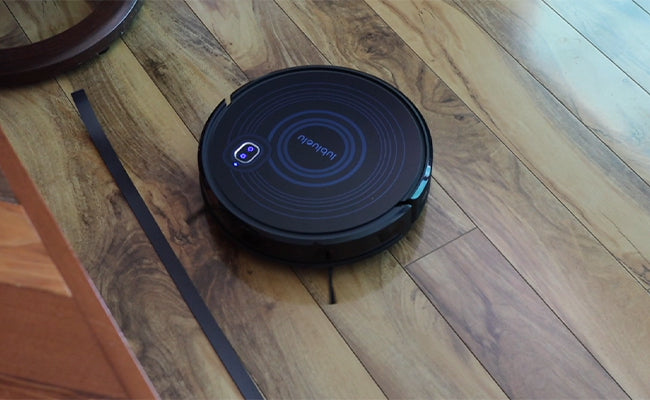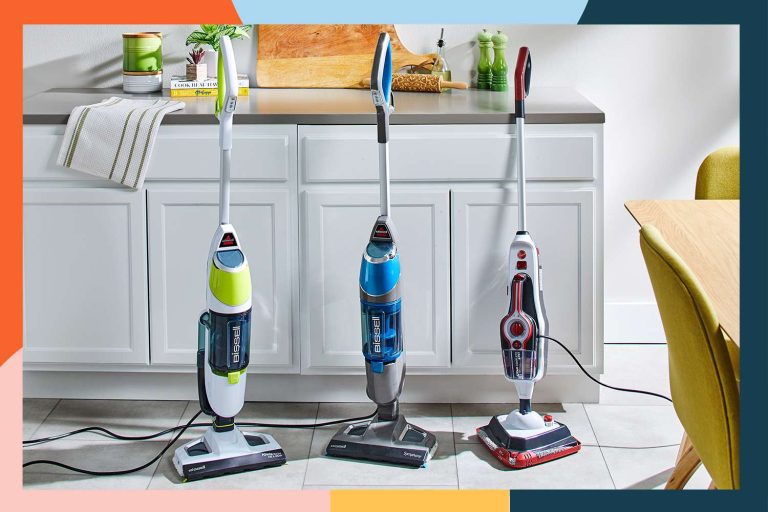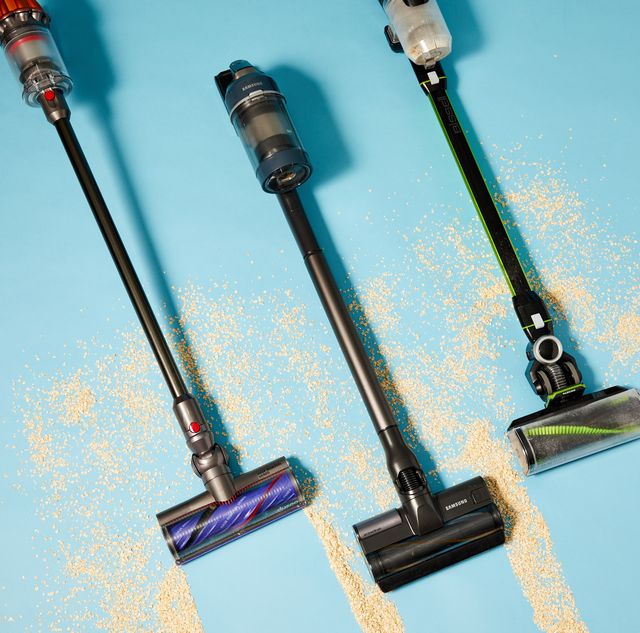What to Look for When Buying a Robot Vacuum?
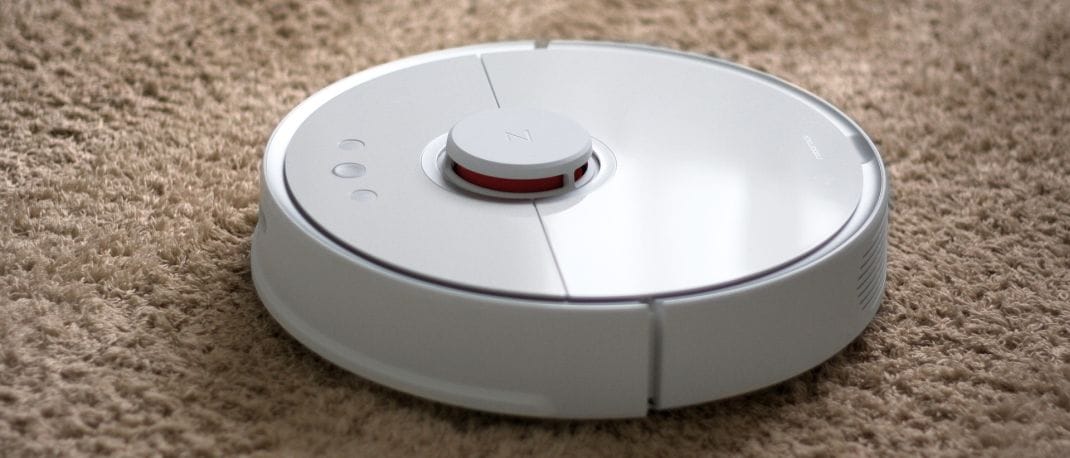
When buying a robot vacuum, consider its battery life and suction power. Check for compatibility with smart home systems and ease of maintenance.
Robot vacuums have revolutionized home cleaning with their convenience and advanced features. As you navigate the market for the perfect robotic assistant, it’s essential to prioritize key attributes that accommodate your living space and lifestyle. Factors such as the vacuum’s ability to handle different floor types, the presence of navigation and mapping technologies, and the inclusion of boundary markers or no-go zones will significantly influence your satisfaction.
Furthermore, you’ll want to assess the machine’s dustbin capacity, which affects how often you’ll need to empty it, and look for models that boast strong customer support and warranties for added peace of mind. By focusing on these vital aspects, you’ll be well on your way to selecting a robot vacuum that makes your daily routine more efficient.
Introduction To Robot Vacuums
Robot vacuums represent the cutting-edge of home cleaning technology, offering a blend of convenience and efficiency for today’s busy lifestyles. Once reserved for sci-fi movies, these compact devices now glide through our living spaces, taking the effort out of keeping floors immaculate. As home automation devices proliferate, a robot vacuum becomes an undeniable asset: it’s sleek, smart, and just what modern homes need.
The Rise Of Home Automation
Home automation, the backbone of the smart home revolution, seamlessly integrates technology into everyday life. With advancements in IoT (Internet of Things) and AI (Artificial Intelligence), household devices can communicate and learn from user habits, simplifying tasks and saving precious time. Among these innovations, robot vacuums stand out as frontrunners for their ease of use and advanced functionalities.
- Scheduled cleaning cycles
- Self-charging capabilities
- Voice and app control
How Robot Vacuums Are Changing The Cleaning Landscape
The emergence of robot vacuums has shifted the cleaning paradigm, offering a hands-free approach to floor maintenance. No longer a clunky novelty, these devices boast sophisticated navigation systems, custom cleaning settings, and autonomy that give users back their time. From tackling pet hair to auto-adjusting for different floor types, a robot vacuum’s versatility is transforming cleaning from a chore into a seamless part of daily living.
| Feature | Benefit |
|---|---|
| Adaptive Navigation | Efficiently maps and navigates rooms |
| Custom Cleaning Modes | Tailors cleaning to specific needs |
| App Integration | Provides remote control and scheduling |
Understanding The Basics Of Robot Vacuums
Embarking on the journey of purchasing a robot vacuum can transform your daily cleaning routine. As these autonomous helpers become more advanced, understanding their fundamental aspects is crucial in making an informed decision. Dive into the core elements that define these smart devices and discover the key components that differentiate one model from another. Let’s begin by demystifying what robot vacuums are and what they consist of.
Defining Robot Vacuums
Robot vacuums, often known as robovacs, are autonomous, compact, and intelligent floor cleaners designed to keep your living space tidy without manual intervention. Unlike traditional vacuum cleaners, these smart gadgets are equipped with sensors, motherboards, motors, and cleaning brushes to navigate and adapt to various home environments. Embrace the convenience and efficiency of these futuristic cleaning aids that offer a hassle-free approach to maintaining spotless floors.
Key Components Of A Robot Vacuum
Understanding the anatomy of a robot vacuum is essential for selecting a device that meets your specific cleaning needs. Key components include:
- Sensors: These allow the vacuum to detect obstacles, stairs, and even dirty areas, ensuring effective navigation and cleaning.
- Motor: The powerhouse that drives the brushes and suction mechanism to collect dust, debris, and pet hair.
- Battery: The quality and lifespan of a battery determine the vacuum’s run time between charges.
- Filter: Captures fine particles, and in higher-end models, offers HEPA filtration for allergen reduction.
- Brushes: Side brushes reach corners and edges, while rolling brushes agitate and lift debris from floors.
- Dustbin: The capacity of the dustbin influences how frequently it needs to be emptied and can impact the overall maintenance.
Every robot vacuum is an amalgam of these components, which work in harmony to offer the ease of automated cleaning. When choosing your robot vacuum, consider the efficiency and type of each component to ensure it aligns with your household cleaning requirements and lifestyle.
Core Features To Consider
Embarking on the quest for the perfect robot vacuum can feel like navigating a technological jungle. For a purchase that promises to streamline your daily routine, it’s essential to discern the core features that align with your unique living space and lifestyle. Thus, shifting focus to the heart of the matter, let’s delve into the specifics that transform a standard robot vacuum into your devoted, dust-busting sidekick.
Suction Power And Cleaning Performance
Exceptional suction power is the driving force behind any efficient robot vacuum. Beyond the numbers, what defines suction capability includes adjustability for different surfaces and debris types, as well as consistency during its entire run cycle. Furthermore, cleaning performance is enhanced with the integration of various brushes, filters, and a receptacle adept at handling everything from pet hair to fine dust.
Battery Life And Charging Options
Long battery life and smart charging options stand as pillars ensuring that your robot vacuum covers all necessary ground without frequent interruptions. Look for models with a minimum runtime that suits your home size and consider whether the vacuum autonomously docks and recharges or if manual reconnection suits your acceptable maintenance level. Quick charging can also be a game-changer for larger spaces needing rapid, back-to-back cleaning cycles.
Navigation And Mapping Capabilities
A sophisticated robot vacuum must come equipped with advanced navigation and mapping technology. This intelligence allows the device to strategically clean while avoiding obstacles, ensuring a thorough clean. Look for features such as LIDAR or visual mapping that can store floor plans for multi-level homes. Additionally, vacuums boasting no-go lines or zones can protect specific areas from being disturbed.
| Feature | What to Look For |
|---|---|
| Suction Power | Adjustability, Multiple Surface Compatibility |
| Battery Life | Minimum Runtime, Autonomous Charging |
| Mapping Technology | LIDAR/Visual Mapping, No-Go Zones |
- Assess suction power and performance based on surface types in your home.
- Ensure the battery life supports the vacuum’s workload per cleaning cycle.
- Confirm navigation tech suits your space’s complexity and furniture layout.

Credit: www.ecovacs.com
Advanced Technologies And Convenience Factors
As homes evolve into smarter ecosystems, the humble robot vacuum cleaner is no exception. The latest models come equipped with cutting-edge technologies designed to make our lives easier. From seamless integration with home automation systems to self-sufficient maintenance, these features are not just fancy add-ons; they are game-changers in the world of automated cleaning. Below, we dive into the specifics of what to consider for the tech-savvy homeowner eager to keep their living spaces immaculately clean with minimal effort.
Smart Home Integration And Connectivity
Robot vacuums with smart home capabilities are becoming increasingly popular. Check for models that offer:
- Wi-Fi connectivity: For remote control via smartphone apps.
- Voice assistant compatibility: To enable voice commands through devices like Amazon Alexa or Google Assistant.
- IFTTT support: This allows for more complex automation with other smart home devices.
Searching for a robot vacuum that syncs with your smart home setup? Ensure it has the right protocols to seamlessly integrate with your existing ecosystem. Such integration elevates the user experience to new heights, offering effortless control and scheduling capabilities.
Automatic Dirt Disposal And Self-maintenance Features
Long-term upkeep is also a vital aspect of selecting the right robot vacuum. Features such as:
- Self-emptying docks: They automatically offload the dirt from the robot into a larger bin, reducing how often you need to intervene.
- Brush cleaning systems: Some models can untangle hairs and fibers from their brushes, maintaining performance without your input.
- Filter change indicators: These alerts remind you when it’s time to replace filters to keep the air in your home fresh and clean.
These self-maintenance capabilities ensure your robot vacuum continues to operate at peak efficiency without constant hand-holding. When choosing your next cleaning companion, prioritize models that promise a low maintenance experience with high cleaning performance.
Design And Physical Attributes
Embarking on the journey to a dust-free home means considering the Design and Physical Attributes of a robot vacuum. These critical aspects influence the device’s ability to navigate your home effortlessly, withstand wear and tear, and ultimately determine its lifespan and efficiency. Let’s deep dive into what physical features make for an optimal robotic companion in home cleaning.
Size And Design Considerations For Your Home Layout
The size and design of a robot vacuum are pivotal when it comes to maneuvering around furniture and fitting into tight spaces. To ensure the perfect match:
- Measure the clearance under furniture to ascertain the height your robot vacuum needs to be for optimal access.
- Use a tape measure or even a handy app to gauge the dimensions of the most cluttered areas to ensure your robot won’t get stuck.
- Choose a design with a low-profile for better reach under couches and cabinets.
- Consider the shape — while circular models are common, a D-shaped robot vacuum can better navigate corners and edges.
Different homes demand varied functionalities; considering your layout is key to unlocking a clean abode.
Durability And Build Quality
A sturdy build quality equates to a longer-lasting appliance. In assessing durability, scrutinize:
- The material composition of the vacuum — high-grade plastics or metal accents may suggest better quality.
- Bumper robustness— since robot vacuums often bump into objects, a solid bumper protects its internal components.
- The quality of wheels is crucial for traversing between different surfaces without getting stuck or causing damage.
Opt for a vacuum that combines a compact design with solid construction, ensuring longevity and effectiveness in keeping your home spotless.
User-friendly Operation And Maintenance
Embarking on the search for the perfect robot vacuum involves not just understanding its cleaning abilities but also evaluating the user-friendly operation and maintenance. The best devices merge high-tech features with simple interfaces, ensuring a seamless experience from initial setup to regular upkeep. This focus on simplicity and accessibility directly impacts your satisfaction with the robot vacuum over its lifetime.
Ease Of Use: Controls And Interface
An intuitive control system makes interacting with your robot vacuum a breeze. Here’s what to consider:
- App Integration – Look for vacuums that offer a comprehensive mobile app. This should allow you to schedule cleanings, view cleaning history, and adjust settings with ease.
- Manual Controls – Even if app controls are present, manual operation via buttons or a remote is a valuable fallback for times when your smartphone isn’t handy.
- Voice Commands – Compatibility with smart assistants like Alexa or Google Home adds another layer of convenience. Voice commands can start, stop, or dock your vacuum effortlessly.
| Feature | Description | Benefits |
|---|---|---|
| Direct Control | On-device buttons for immediate operation | No need for external devices or apps |
| Remote Access | Apps and smart home integration for control from anywhere | Flexibility and advanced scheduling options |
| Notifications | Alerts for full bins, stuck situations, or completed tasks | Keeps you informed to take necessary action |
Maintenance Requirements And Accessibility
For long-term satisfaction, it’s essential to consider the maintenance needs:
- Filter Replacement – Understand the type of filters used and the frequency of replacements. HEPA filters, for example, provide superior air quality but may need more frequent changes.
- Brush Cleaning – Check how easy it is to remove and clean the brushes. Tangle-free designs are ideal for pet owners.
- Dustbin Design – Consider the size of the dustbin and how straightforward it is to empty without causing a mess.
Maintenance should be a swift, near-effortless task. Look for robot vacuums with modular designs that allow easy component removal. Quick access to filters, brushes, and bins not only saves time but also helps in maintaining optimal performance.
Lastly, availability of spare parts, an often overlooked aspect, ensures you won’t be left in a lurch should a component need replacing. Manufacturers providing good customer support and readily available spare parts will keep your robot vacuum running smoothly far longer.
Making Your Purchase: Brand, Budget, And Warranties
The quest for the perfect robot vacuum can lead you down a path filled with an array of brands, varied budget points, and warranties that promise peace of mind. In this next section, we’ll help sharpen your focus so you can make an informed decision that aligns with your needs, financial boundaries, and expectations for after-purchase support.
Comparing Brands And Models
Robot vacuums are not a one-size-fits-all solution. Each brand offers unique features tailored to different lifestyles and cleaning requirements. While some excel in pet hair pick-up, others boast advanced navigation systems. Consider the following to help compare:
- Performance: Look for reviews and tests that measure suction power and efficiency in various environments.
- Features: Do you need smart home integration, customized scheduling, or virtual walls? Make a list of must-haves.
- User Experience: User-friendly interfaces and simple maintenance could make or break your relationship with your robot vacuum.
Determining Your Budget And What It Gets You
Your budget dictates the spectrum of robot vacuums available to you. Yet, it’s important to decode what your investment nets you:
- Entry-Level: Basic functionality, typically without app integration or sophisticated navigation.
- Mid-Range: A mix of essential features with some enhanced technology, like improved suction or minimal smart home features.
- High-End: State-of-the-art navigation, full smart home compatibility, and superior cleaning power on a variety of surfaces.
Understanding Warranty And Support Options
Warranties and support services are your safety net post-purchase. Manufacturers typically offer a range of warranties, which may cover:
| Type of Coverage | What It Includes | Duration |
|---|---|---|
| Basic | Manufacturing defects, labor, and parts | 1 Year |
| Extended | Additional coverage on specific parts, software updates | 2+ Years |
| Support Plans | Dedicated support lines, expedited services | Varies |
Investigate the manufacturer’s reputation for customer service, read the fine print for what is and isn’t covered, and check for any additional support plans that could keep your robot vacuum running smoothly for years to come.
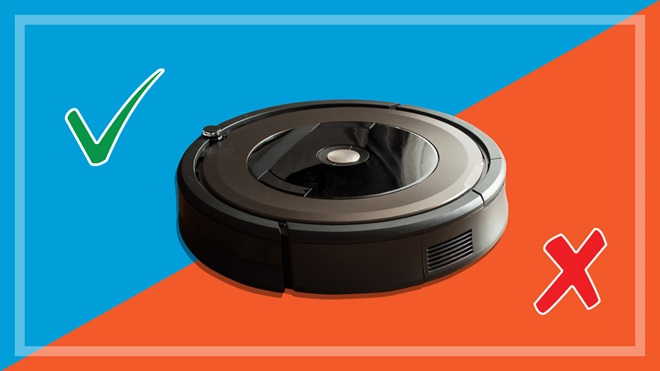
Credit: www.choice.com.au

Credit: www.techadvisor.com
Frequently Asked Questions For What To Look For When Buying A Robot Vacuum
How Do I Choose A Good Robotic Vacuum Cleaner?
Consider your home size and floor type before choosing a robotic vacuum cleaner. Opt for models with strong suction power, long battery life, and smart navigation features. Ensure it has automatic recharging and is compatible with your smart home system for seamless operation.
How Much Suction Power Should A Robot Vacuum Have?
A robot vacuum’s suction power should range from 500 to 2000 Pa (Pascals) for effective cleaning, with higher values for thicker carpets.
Is 2000 Pa Suction Good For Robot Vacuum?
Yes, a 2000 pa suction is effective for a robot vacuum, offering solid performance on various surfaces and adequate for typical cleaning tasks.
Conclusion
Navigating the realm of robot vacuums can be daunting. Remember, assess functionality, compatibility with your smart home, and battery life. Seek vacuums that balance price with performance. Reading reviews and after-sales policies could save future headaches. With careful selection, your perfect cleaning companion awaits.
